Gamification is a buzzword that has been making waves in various sectors, and education is no exception. Imagine turning your classroom into a game where students earn points, badges, and rewards for completing assignments and participating in class activities. Sounds fun, right? But gamification is more than just fun and games; it’s a powerful tool that can transform the educational experience for students, parents, and educators alike.
What is Gamification?
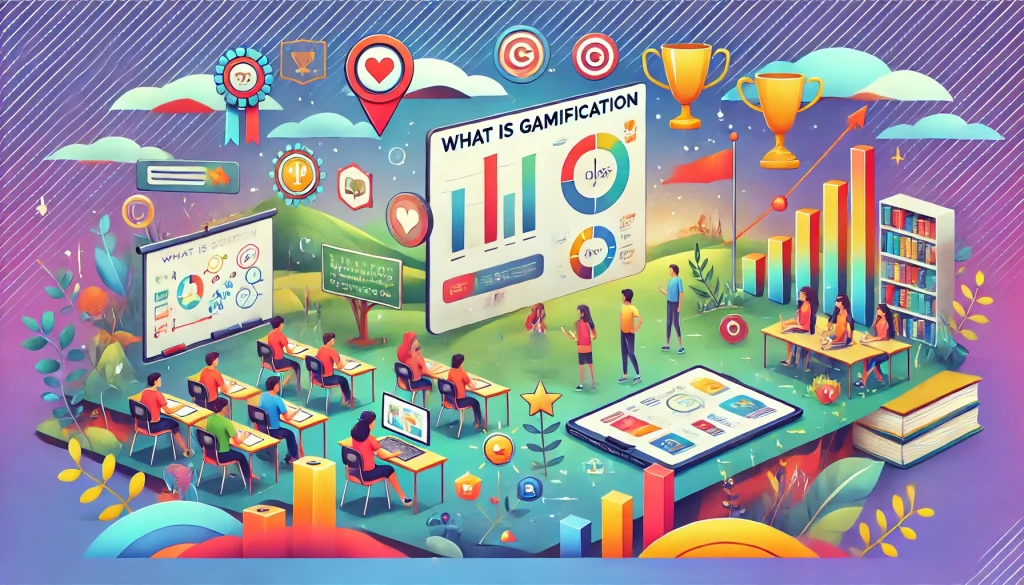
At its core, gamification involves applying game-design elements and principles in non-game contexts. In education, this means incorporating aspects like point scoring, leaderboards, and competition into the learning process. Think of it as adding a layer of game mechanics to traditional educational activities to make them more engaging and motivating.
For example, a teacher might use a point system where students earn points for completing homework, participating in class discussions, or helping classmates. These points can then be redeemed for rewards like extra recess time or a homework pass. The idea is to make learning more interactive and enjoyable, thereby increasing student engagement and motivation.
The Psychology Behind Gamification
Why does gamification work? The answer lies in psychology. Games are designed to be engaging and rewarding, tapping into our natural desires for achievement, competition, and social interaction. When these elements are applied to education, they can make learning more appealing and effective.
For instance, earning a badge for mastering a math concept can give students a sense of accomplishment and encourage them to tackle more challenging topics. Similarly, a leaderboard can foster healthy competition among students, motivating them to improve their performance.
How Can Gamification Improve Education?
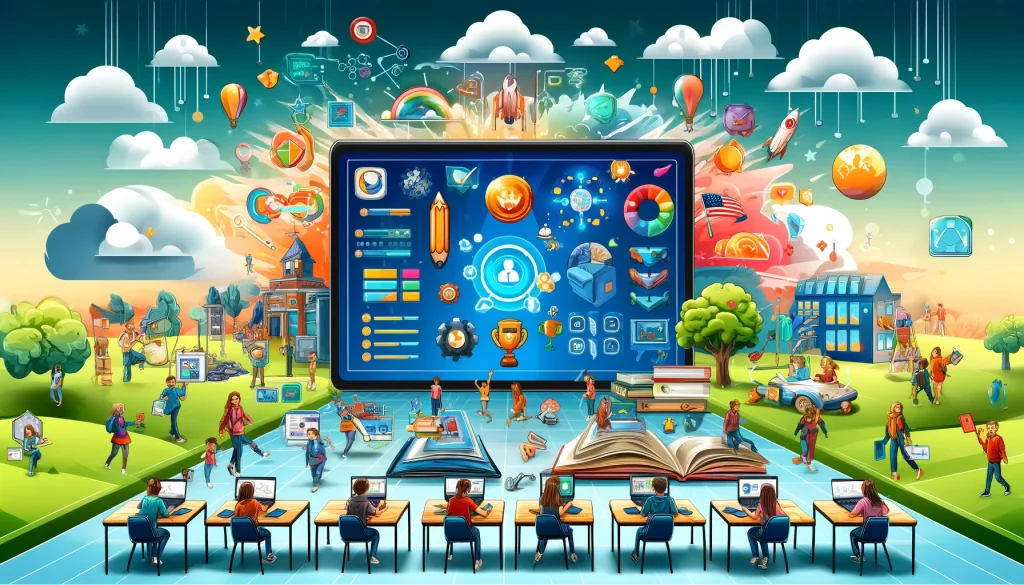
Gamification can bring a host of benefits to the educational landscape. One of the most significant advantages is increased student engagement. When students are actively involved in their learning process, they are more likely to retain information and develop a deeper understanding of the subject matter.
Enhanced Motivation
Traditional teaching methods can sometimes be monotonous, leading to disengagement and lack of motivation. Gamification can inject a sense of excitement and competition into the classroom, making learning more dynamic and enjoyable. This increased motivation can lead to better academic performance and a more positive attitude towards learning.
Personalized Learning
Gamification allows for a more personalized learning experience. By tracking students’ progress and performance, educators can tailor their teaching methods to meet individual needs. For example, a student struggling with a particular topic can receive additional resources and support, while a student excelling in another area can be challenged with more advanced material.
Immediate Feedback
One of the key elements of gamification is providing immediate feedback. In a game, players know right away if they’ve succeeded or failed, allowing them to adjust their strategies accordingly. This principle can be applied to education, where students receive instant feedback on their performance, helping them identify areas for improvement and stay on track.
How Can Gamification Help Students?
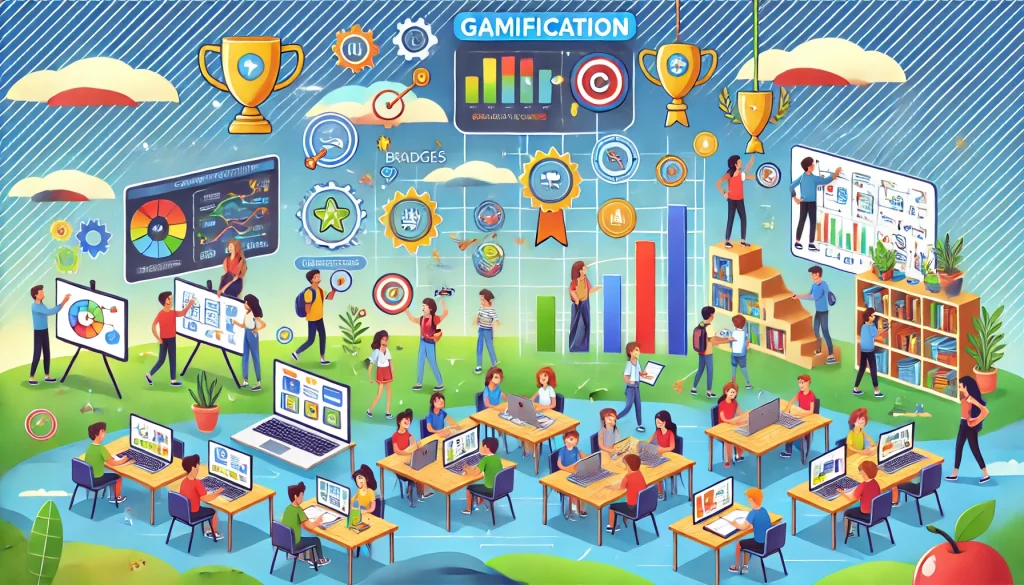
Gamification can have a profound impact on students, helping them develop essential skills and fostering a love for learning. One of the most significant benefits is the development of problem-solving skills. Games often require players to think critically, strategize, and solve complex problems, skills that are directly transferable to the classroom.
Building Resilience
In a game, failure is not the end but an opportunity to try again and improve. This mindset can be incredibly beneficial for students, teaching them resilience and perseverance. When students view challenges as opportunities for growth rather than obstacles, they are more likely to persist in the face of difficulties and achieve their goals.
Encouraging Collaboration
Many games involve teamwork and collaboration, skills that are essential in both academic and professional settings. Gamification can encourage students to work together, share ideas, and support each other, fostering a sense of community and cooperation in the classroom.
Boosting Confidence
Achieving success in a game can boost students’ confidence and self-esteem. When students see that their efforts are rewarded and recognized, they are more likely to believe in their abilities and take on new challenges. This increased confidence can translate to better academic performance and a more positive attitude towards learning.
Gamification for Different Student Age Groups
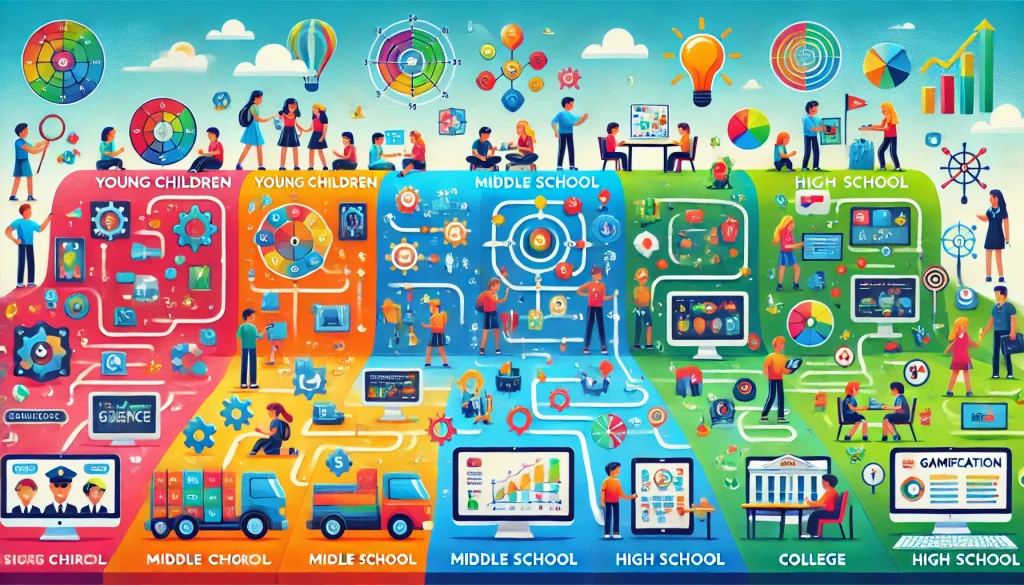
Ages 4-7
For younger students, gamification can be a powerful tool to make learning fun and engaging. Simple games that incorporate basic concepts like counting, shapes, and colors can help young children develop foundational skills in a playful and interactive way. For example, a teacher might use a game where students earn stickers for correctly identifying shapes or colors, making the learning process enjoyable and rewarding.
Ages 7-11
As students get older, gamification can be used to introduce more complex concepts and encourage critical thinking. Educational games that involve problem-solving, strategy, and teamwork can help students develop essential skills while keeping them engaged and motivated. For instance, a math game where students earn points for solving problems and can compete against their classmates can make learning math more exciting and competitive.
Ages 11-14
In middle school, gamification can be used to make learning more interactive and relevant to students’ interests. Games that incorporate real-world scenarios and challenges can help students see the practical applications of what they are learning. For example, a science game where students simulate a space mission and solve problems related to physics and chemistry can make learning more engaging and meaningful.
Ages 14-16
For high school students, gamification can be used to enhance critical thinking and problem-solving skills. Games that involve complex scenarios and require strategic thinking can help students develop higher-order thinking skills. For example, a history game where students role-play as historical figures and make decisions based on historical events can make learning history more interactive and thought-provoking.
Ages 16-18+
For older students, gamification can be used to prepare them for college and career readiness. Games that simulate real-world challenges and require students to apply their knowledge and skills can help them develop the competencies needed for success in higher education and the workforce. For example, a business simulation game where students manage a virtual company and make decisions based on market conditions can provide valuable insights into the world of business and entrepreneurship.
Post-Secondary Students
For post-secondary students, gamification isn’t just about making learning fun—it’s about turning complex, sometimes dull, subjects into engaging and even addictive experiences. Think about it: why slog through a boring economics lecture when you can instead play a game where you’re the CEO of a virtual company, making decisions that impact everything from profits to employee morale? Suddenly, supply and demand curves aren’t just abstract concepts—they’re the difference between your virtual company thriving or going belly-up.
In college, gamification can also be a sneaky way to get students to dig deeper into their studies. Picture a psychology course where instead of just reading about behavioral theories, students compete in a multiplayer game to diagnose virtual patients. Or a political science class where you can rise through the ranks in a simulation, negotiating treaties and forming alliances like a pro diplomat. It’s like Model UN on steroids.
And let’s not forget the sweet, sweet rewards. Whether it’s earning badges for mastering topics or climbing a leaderboard in a coding challenge, these gamified elements tap into that competitive spirit—because who doesn’t want to be top of the class without realizing they’ve spent hours studying?
In the end, gamification in post-secondary education is like the secret sauce that makes the learning process not just tolerable, but genuinely enjoyable. It turns dry lectures into dynamic challenges, dull assignments into exciting quests, and boring theories into practical, real-world applications. So, instead of hitting the snooze button on that 8 a.m. lecture, students might just find themselves logging in early to see if they’ve finally beaten their roommate’s high score.
Implementing Gamification in The Classroom
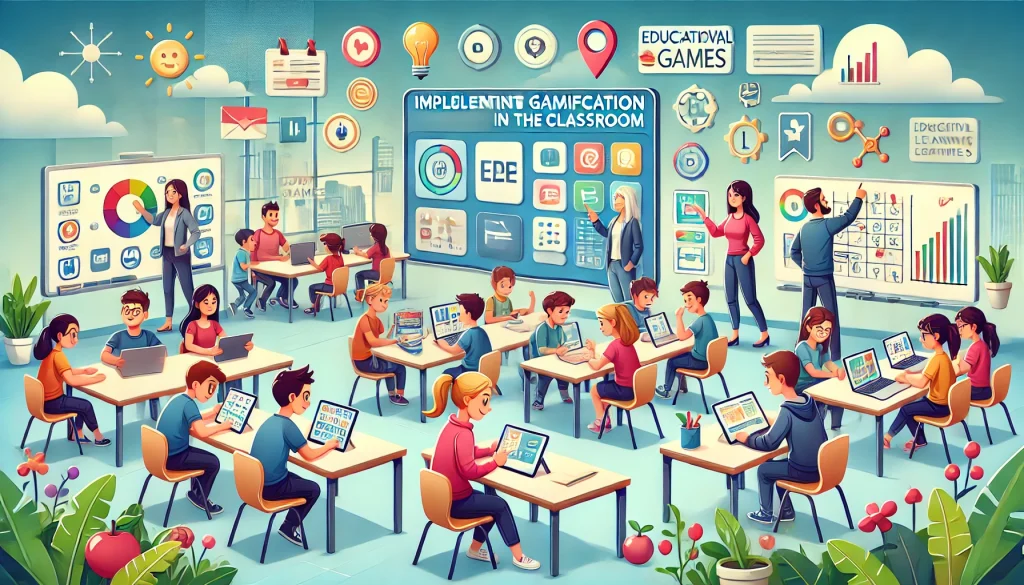
Implementing gamification in the classroom requires careful planning and consideration. It’s essential to align the game elements with the learning objectives and ensure that they enhance, rather than distract from, the educational experience. Here are some tips for successfully integrating gamification into your teaching practice.
Start Small
Begin by incorporating simple game elements into your lessons, such as point systems, badges, or leaderboards. As you become more comfortable with gamification, you can gradually introduce more complex game mechanics and activities. Starting small allows you to experiment and see what works best for your students without overwhelming them or yourself.
Involve Students in the Process
Get your students involved in the gamification process by seeking their input and feedback. Ask them what types of games and rewards they find motivating and engaging. Involving students in the decision-making process can increase their buy-in and make the gamification experience more meaningful and enjoyable for them.
Balance Fun and Learning
While gamification can make learning more fun, it’s essential to strike a balance between entertainment and education. Ensure that the game elements you incorporate are aligned with your learning objectives and enhance the educational experience. Avoid turning your classroom into a game arcade, and focus on using gamification as a tool to support and enrich the learning process.
Gamification in Education: Resources and Tips
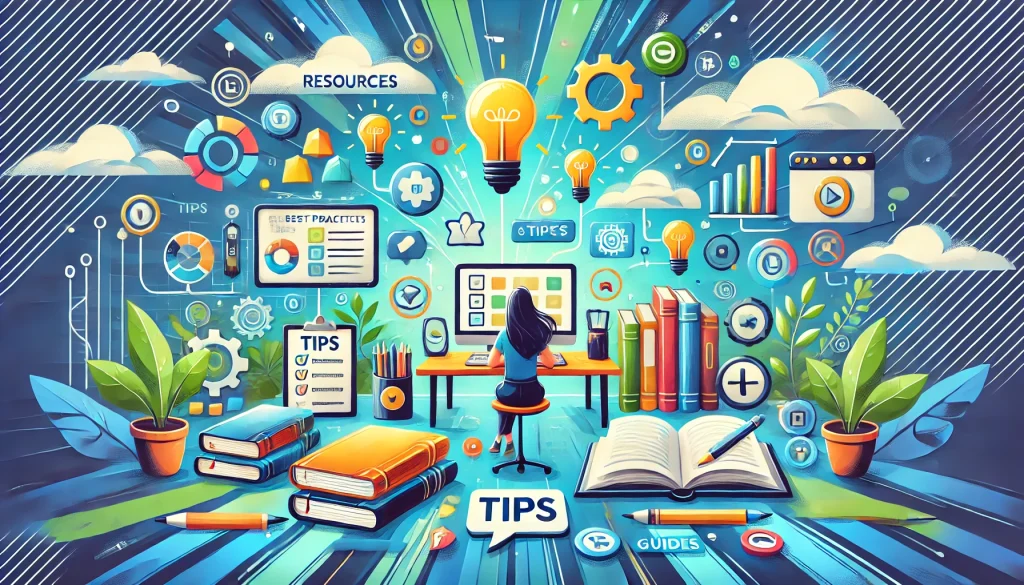
There are numerous resources available to help educators implement gamification in their classrooms. From online platforms and apps to books and professional development courses, you can find a wealth of information and tools to support your gamification efforts.
Online Platforms and Apps
Several online platforms and apps are designed specifically for educational gamification. Websites like Classcraft, Kahoot!, and Quizizz offer a range of gamified activities and resources that can be easily integrated into your teaching practice. These platforms provide ready-made games and activities, as well as tools for creating your own customized gamified lessons.
Books and Articles
There are many books and articles available that explore the theory and practice of gamification in education. Titles like “The Gamification of Learning and Instruction” by Karl Kapp and “Reality Is Broken” by Jane McGonigal offer valuable insights and practical tips for incorporating gamification into your teaching practice. Reading widely on the topic can help you develop a deeper understanding of gamification and its potential benefits for education.
Professional Development
Consider participating in professional development courses and workshops focused on gamification in education. Many educational organizations and institutions offer training programs that provide hands-on experience and practical strategies for implementing gamification in the classroom. Professional development can help you build your skills and confidence in using gamification to enhance your teaching practice.
Conclusion
Gamification in education is much more than a passing fad; it’s a transformative approach that has the potential to reshape the entire learning landscape. By integrating game-like elements into educational settings, we’re not just making learning more fun—we’re tapping into the natural human instincts for competition, achievement, and exploration. This shift can turn even the most reluctant learners into enthusiastic participants, creating a classroom environment where engagement and motivation are at all-time highs.
For educators, gamification offers a toolkit of strategies to make lessons more dynamic and interactive. It’s like having a magic wand that can turn a mundane lesson into an exciting adventure, where students are not just passively absorbing information but actively participating in their own learning journey. This approach also opens the door to differentiated instruction, allowing teachers to tailor experiences to the unique needs and interests of each student, ensuring that every learner stays challenged and engaged.
Parents, too, can leverage gamification to support their child’s learning at home. Whether through educational apps, online games, or even gamified chores, the principles of gamification can help make learning a seamless part of everyday life. It’s about turning “have to” into “want to,” whether that’s finishing homework, reading a book, or even learning a new skill.
For students, gamification makes learning something to look forward to rather than dread. It adds an element of fun and excitement to the process, making subjects more relatable and accessible. Plus, the instant feedback and rewards often found in gamified environments can help build confidence and reinforce positive learning habits.
In the grand scheme of things, gamification is more than just an innovative teaching strategy; it’s a movement toward a more personalized, engaging, and effective educational experience. As we continue to explore and refine these methods, the possibilities for enhancing education are endless. Whether you’re a teacher, parent, or student, embracing gamification is like unlocking a secret level in the game of education—one where everyone has a chance to win.
Frequently Asked Questions
What is gamification in education?
Gamification in education involves applying game-design elements and principles, such as point scoring, leaderboards, and rewards, to traditional educational activities to make learning more engaging and motivating.
How does gamification benefit students?
Gamification can benefit students by increasing their engagement and motivation, enhancing their problem-solving and critical thinking skills, fostering collaboration and teamwork, and boosting their confidence and resilience.
Can gamification be used for all age groups?
Yes, gamification can be adapted to suit different age groups, from young children to older students. The key is to tailor the game elements and activities to the developmental needs and interests of each age group.
What are some examples of gamification in the classroom?
Examples of gamification in the classroom include using point systems, badges, and leaderboards to reward student achievements, incorporating educational games and simulations into lessons, and creating challenges and competitions to motivate students.
How can educators get started with gamification?
Educators can start with gamification by incorporating simple game elements into their lessons, seeking input and feedback from students, balancing fun and learning, and utilizing available resources such as online platforms, books, and professional development courses.
